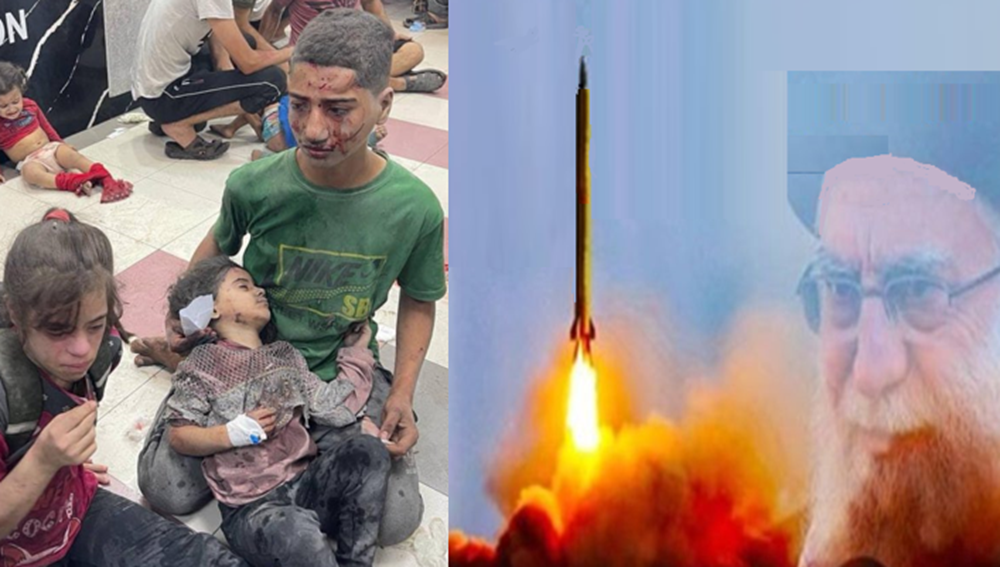
In the intricate web of Middle Eastern politics, Iran’s tactical emphasis on the Palestinian issue, as articulated by Ali Khamenei in his recent Nowruz message, unveils a multifaceted strategy aimed at both regional influence and domestic diversion.
Khamenei’s declaration, positioning the “Palestine and Gaza issue” as a top priority, is a telling reflection of Iran’s longstanding use of external conflicts to consolidate internal power and distract from domestic unrest.
Iran, a nation embroiled in deep economic, social, and political challenges, seemingly diverts focus to the Arab world’s conflicts, an approach perplexing at face value but deeply rooted in the regime’s history and survival tactics. This strategy is not novel but echoes the tactics employed by Khomeini during the eight-year war with Iraq in the 1980s, where external conflicts were leveraged to unify the nation under the guise of religious and revolutionary duty, thereby quelling dissent and sidelining internal issues.
Khomeini’s instigation of Iraq and the subsequent war was branded a “divine blessing,” a rhetoric aimed at mobilizing support and justifying the regime’s focus away from pressing domestic needs. Similarly, today’s Iranian leadership seeks to invoke a sense of pan-Islamic duty towards Palestine and Gaza, framing resistance as a central pillar of its ideological stance.
#Iranian Regime’s Fourfold Objectives in the #GazaCrisishttps://t.co/UXfRouGv2b
— NCRI-FAC (@iran_policy) November 9, 2023
Ahmad Alamolhoda’s remarks on Gaza effecting a “transformative shift” further underscore the regime’s intention to cast external conflicts as pivotal moments of historical significance, thereby rallying nationalistic and revolutionary fervor.
However, this external focus comes at a time when Iran faces significant internal challenges, including diminishing stability and the persistent efforts of organized resistance movements both within and outside its borders. The regime’s engagement in warmongering and its prioritization of external conflicts are increasingly seen as tactics of self-preservation, diverting attention from internal dissent and economic woes.
The historical refusal of Khomeini to end the war with Iraq, even after the withdrawal of Iraqi forces, reveals a pattern of behavior where the regime’s survival is intricately linked with ongoing conflict. The war was prolonged under the pretense of liberating Quds through Karbala, showcasing a willingness to sacrifice domestic well-being for ideological and strategic goals.
Watch and judge how "regime change" has evolved into the primary concern for #Iran's state officials pic.twitter.com/bGybzQ5oZO
— NCRI-FAC (@iran_policy) September 16, 2023
Yet, the eventual acceptance of the ceasefire in 1988, portrayed by Khomeini as drinking a “chalice of poison,” indicates the limits of this strategy when faced with a credible internal threat. The role of the National Liberation Army of Iran (NLA) and the rallying cry of “Today Mehran, tomorrow Tehran” exemplifies the potential of organized resistance to compel the regime to alter its course.
In the current geopolitical landscape, Khamenei’s focus on Gaza, despite failing to replicate past victories, signifies an attempt to use external crises as a means of bolstering his regime’s legitimacy and distracting from domestic failures. The question of how to effectively counter this strategy remains, with history suggesting that internal resistance may hold the key to challenging the regime’s war agenda and its broader tactics of diversion and suppression.

MEK Iran (follow us on Twitter and Facebook), Maryam Rajavi’s on her site, Twitter & Facebook, NCRI (Twitter & Facebook), and People’s Mojahedin Organization of Iran – MEK IRAN – YouTu
